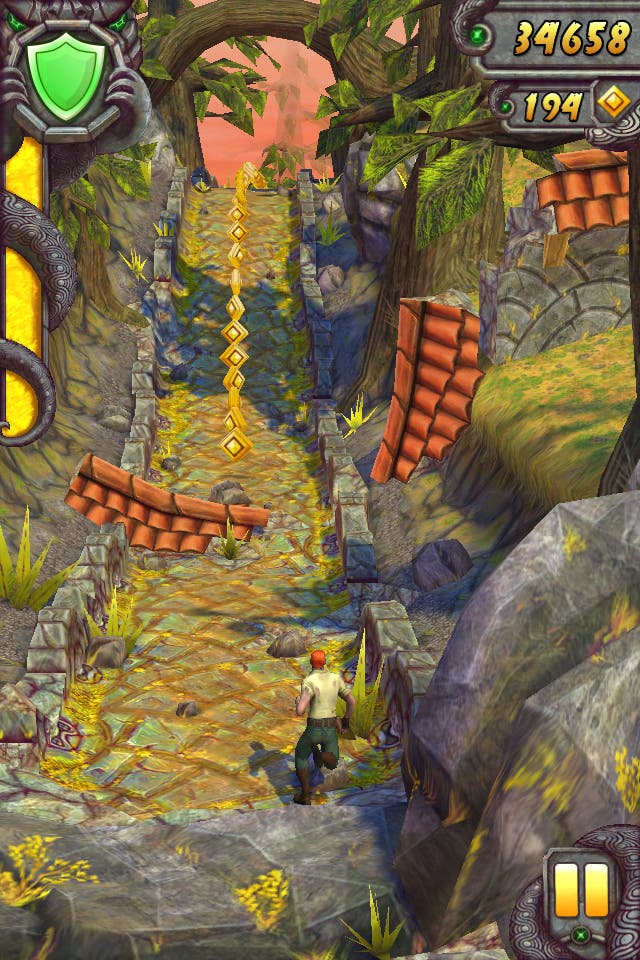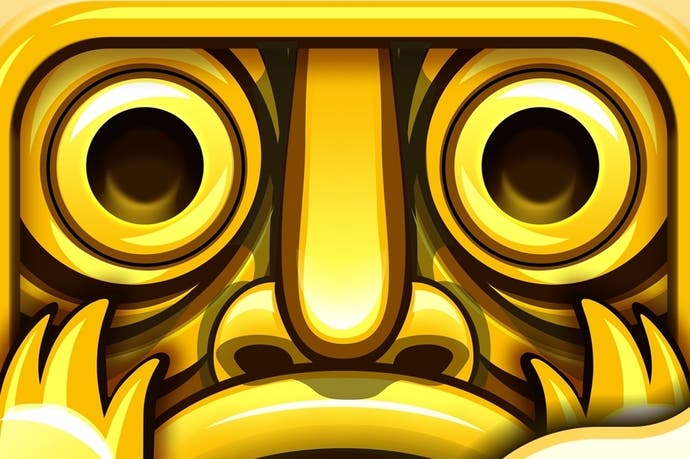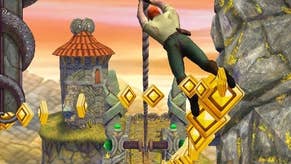Temple Run 2 review
Idol thumbs.
If Franz Kafka had been around to see video games, the infinite runner would be his genre of choice.
Canabalt, the title that single-handedly invented the smartphone-friendly single-button running genre in 2009, had a visual palette limited to dreary greys - rather suited to an apocalyptic game that invariably ends in your death.
In 2011, Temple Run took Canabalt's forever-running blueprint and installed it in a colourful 3D world where you recreate the opening scene from Raiders of the Lost Ark over and over again. Like Professor Jones, the protagonist of Temple Run is trying to escape with a sacred idol looted from an ancient ruin. Unlike Professor Jones' adventure, however, there ultimately is no escape - you will always die, and the reason for playing again is just to get a little farther before your grim demise. Somewhere, Kafka chuckles.
Temple Run 2 does not mess with Temple Run's formula. Given that Temple Run and its Disney-commissioned spin-off Temple Run: Brave were collectively downloaded over 170 million times, there's some pretty defensible logic at work there. Mechanically, the sequel is identical to its predecessor: swiping to take turns in the road, jumping over or ducking under obstacles and using your phone's tilt controls to lean one way or the other. Temple Run 2 is an unapologetically casual game that can be played on the train or the bus with one hand. Your average run won't last a minute - perfect for killing time in a lift or during a television ad break.

Another developer might have been tempted to shoehorn cut-scenes or role-playing elements into Temple Run 2, but Imangi Studios has been far more restrained than that. The additions slot perfectly into the foundations laid out by the original game. There are new power-ups and abilities to purchase with the gems and coins that you collect as you run, a more detailed graphical engine and a brand-new environment, a Temple of Doom-inspired mine cart sequence and (most significantly) an overhaul to the way the game makes money.
The original Temple Run featured in-app purchases that you could buy to resurrect your adventurer or give you a head start on your run - but these were sold rather unobtrusively. Temple Run 2 sticks its hand out a little more prominently, reminding you after every death that "GAME OVER" is only a problem for tightwads.
Still, it's hard to be too bothered by the way Temple Run 2 has implemented its payment model. The coins and gems used to purchase items and resurrections can be earned through play - it's entirely possible to put a lot of time into Temple Run 2 and never spend a penny. As in-app purchase schemes go, this is still on the more generous end of the spectrum.
It's inarguably a very pretty game to look at. The new setting, a lost city in the clouds, is unique and vibrant, the new ziplines are exhilarating to slide down. These graphical improvements come at a cost to performance, however. Woe to the Temple Runner who receives an SMS or a Twitter mention whilst playing - something that killed me more than once, even on the (relatively) beefy iPhone 4S.
Temple Run 2's most unfortunate change seems like a minor one. The sequel omits the original's mile markers that showed when you had passed the longest run of a Game Center friend. I genuinely miss the sense of competition they brought to the game, though I suppose that now it's possible to keep avoiding death for as long as you're prepared to spend on gems, Temple Run 2's leaderboards are better for identifying spendthrifts than anything else.
The biggest flaw Temple Run 2 betrays is its conservatism. The amount of work that has gone into the game is evident, and it's hard to fault an accessible, thrilling game that offers itself to you for free - but it's so similar to its predecessor that it ultimately feels a bit unnecessary.









